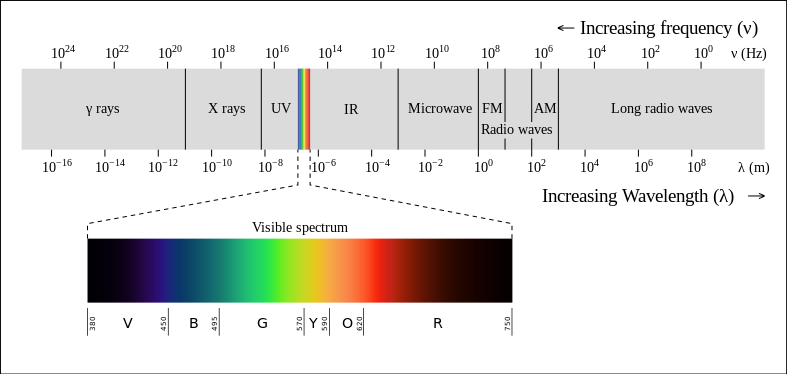
-
No link only topics.
Plus this thing is not for visible light range even :-)
-
ok... so, this article reads:
"... the new device is completely scalable, from near-infrared to terahertz wavelengths."
which, yes... it is not in "the visible light range" for their initial design, but i read further into the 'nano letters' portion of the article..
and it read:
" Simulations are also presented to show that our aberration-free designs are applicable to high-numerical aperture lenses such as flat microscope objectives."
so... perhaps, its only a matter of time until we see one that will work inside of our visible light range... and wouldn't that look wierd?! a non distorted human.. :-)
-
not yet... their future plan is to cover the whole visible spectrum.
-
The concept is plausible and well known for at least 15 years now (see e.g. this article), but it's hard to predict at what quality and price this might be feasible to construct for (more than monochromatic) visible light.
Let's hope and dream that technology will one day allow to create cheap 1mm-thin lenses with almost arbitrary properties ;-)
(PS: The say-nothing youtube video is pointless.)
-
"... the new device is completely scalable, from near-infrared to terahertz wavelengths." Since the visible light part of the electromagnetic spectrum falls within these bounds, one can assume that visible light is included.
-
Interesting, but it would be nice to see more detailed info. There are other possible ways to simplify an optical lens systems, for example by making the sensor focal plane curved/adaptive, or by making the lens' optical properties changeable (e.g., liquid lens, or adaptive catoptric and catadipotric systems). Let's see if any of these would become used outside of labs in real-life imaging.
-
What's the filter size?
-
@caveport: No, the frequencies of visible light are higher than both Infrared and Terahertz (1 THz == 10^12 Hertz) radiation.

Thus creating metamaterial for visible light is considerably more difficult, as it requires smaller structures. And unlike with microwave or Infrared radiation, a person looking at some apparatus processing visible light will quickly see what quality the result has - so it won't be sufficient to "just somehow bend the waves", making the task of producing lens-like quality metamaterial even more difficult.
-
It seems that meta-materials are not the only technology being researched to allow for flat lenses: The published article FlatCam: Thin, Bare-Sensor Cameras using Coded Aperture and Computation describes how a tiny array of "pinhole cameras" can be used completely without lenses, reconstructing the image computationally from the many "pinhole" images:
FlatCam is a thin form-factor lensless camera that consists of a coded mask placed on top of a bare, conventional sensor array. Unlike a traditional, lens-based camera where an image of the scene is directly recorded on the sensor pixels, each pixel in FlatCam records a linear combination of light from multiple scene elements. A computational algorithm is then used to demultiplex the recorded measurements and reconstruct an image of the scene. FlatCam is an instance of a coded aperture imaging system; however, unlike the vast majority of related work, we place the coded mask extremely close to the image sensor that can enable a thin system. We employ a separable mask to ensure that both calibration and image reconstruction are scalable in terms of memory requirements and computational complexity. We demonstrate the potential of the FlatCam design using two prototypes: one at visible wavelengths and one at infrared wavelengths.
-
The same research group now claims to have mastered the art of creating a flat meta-material lens working for the whole spectrum of visible light at once:
https://petapixel.com/2018/01/04/revolutionary-metalens-can-focus-visible-light-one-point/
If there is no awkward unrevealed catch to this, it will definitely revolutionize how camera lenses are made and sized. However, we should wait for the scientific paper and some real-world examples before becoming too enthusiastic.
Update: The abstract of the (pay-walled) scientific paper at https://www.nature.com/articles/s41565-017-0034-6 mentions one catch: Their meta-material lens currently transmits only 20% of the light, meaning 80% of the photons going into the lens do not make it through.
Howdy, Stranger!
It looks like you're new here. If you want to get involved, click one of these buttons!
Categories
- Topics List23,970
- Blog5,724
- General and News1,346
- Hacks and Patches1,153
- ↳ Top Settings33
- ↳ Beginners255
- ↳ Archives402
- ↳ Hacks News and Development56
- Cameras2,360
- ↳ Panasonic990
- ↳ Canon118
- ↳ Sony155
- ↳ Nikon96
- ↳ Pentax and Samsung70
- ↳ Olympus and Fujifilm100
- ↳ Compacts and Camcorders300
- ↳ Smartphones for video97
- ↳ Pro Video Cameras191
- ↳ BlackMagic and other raw cameras117
- Skill1,961
- ↳ Business and distribution66
- ↳ Preparation, scripts and legal38
- ↳ Art149
- ↳ Import, Convert, Exporting291
- ↳ Editors191
- ↳ Effects and stunts115
- ↳ Color grading197
- ↳ Sound and Music280
- ↳ Lighting96
- ↳ Software and storage tips267
- Gear5,414
- ↳ Filters, Adapters, Matte boxes344
- ↳ Lenses1,579
- ↳ Follow focus and gears93
- ↳ Sound498
- ↳ Lighting gear314
- ↳ Camera movement230
- ↳ Gimbals and copters302
- ↳ Rigs and related stuff272
- ↳ Power solutions83
- ↳ Monitors and viewfinders339
- ↳ Tripods and fluid heads139
- ↳ Storage286
- ↳ Computers and studio gear560
- ↳ VR and 3D248
- Showcase1,859
- Marketplace2,834
- Offtopic1,319








